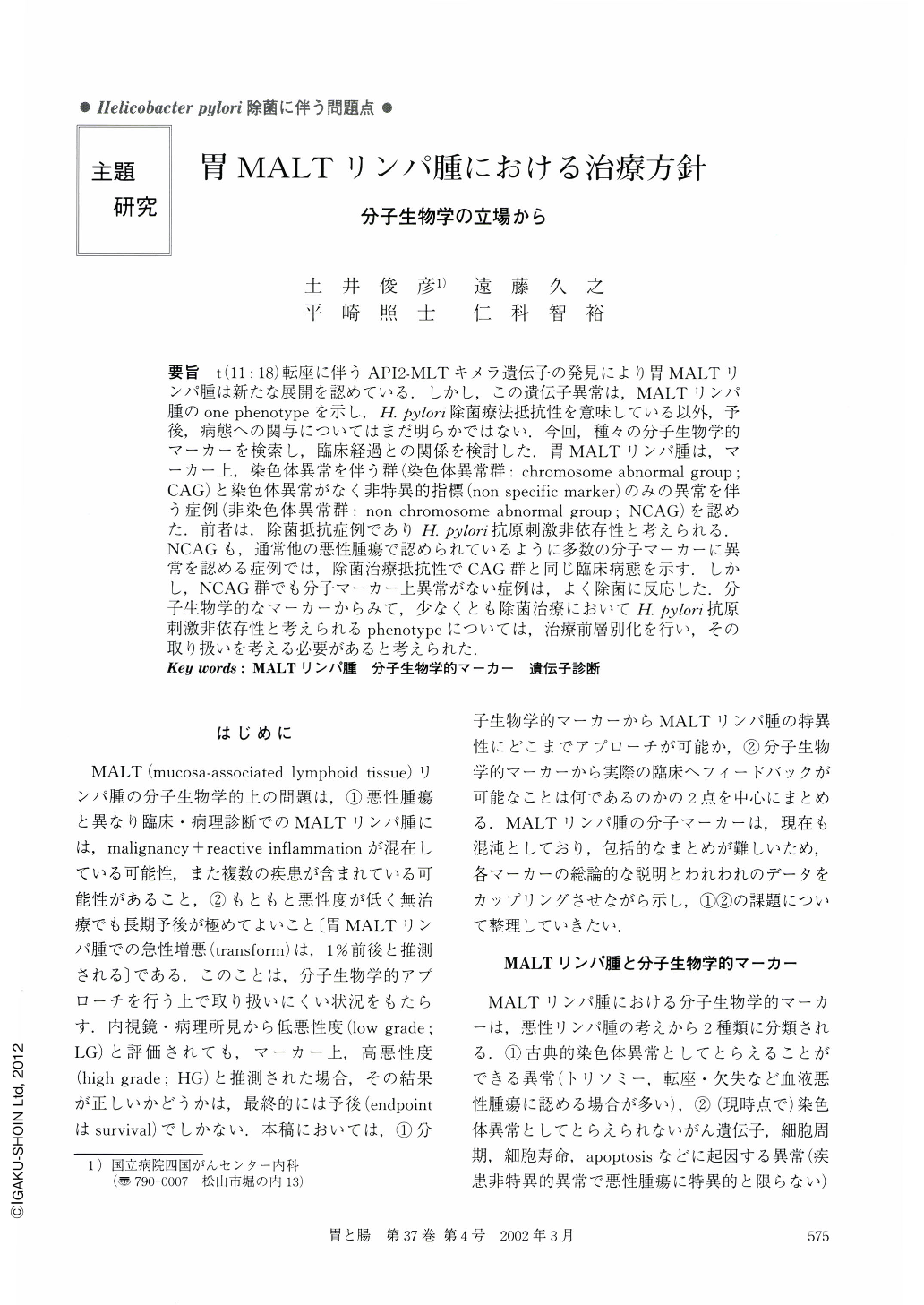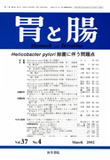Japanese
English
- 有料閲覧
- Abstract 文献概要
- 1ページ目 Look Inside
要旨 t(11:18)転座に伴うAPI2-MLTキメラ遺伝子の発見により胃MALTリンパ腫は新たな展開を認めている.しかし,この遺伝子異常は,MALTリンパ腫のone phenotypeを示し,H. pylori除菌療法抵抗性を意味している以外,予後,病態への関与についてはまだ明らかではない.今回,種々の分子生物学的マーカーを検索し,臨床経過との関係を検討した.胃MALTリンパ腫は,マーカー上,染色体異常を伴う群(染色体異常群:chromosome abnormal group; CAG)と染色体異常がなく非特異的指標(non specific marker)のみの異常を伴う症例(非染色体異常群:non chromosome abnormal group; NCAG)を認めた.前者は,除菌抵抗症例でありH. pylori抗原刺激非依存性と考えられる.NCAGも,通常他の悪性腫瘍で認められているように多数の分子マーカーに異常を認める症例では,除菌治療抵抗性でCAG群と同じ臨床病態を示す.しかし,NCAG群でも分子マーカー上異常がない症例は,よく除菌に反応した.分子生物学的なマーカーからみて,少なくとも除菌治療においてH. pylori抗原刺激非依存性と考えられるphenotypeについては,治療前層別化を行い,その取り扱いを考える必要があると考えられた.
The t(11;18)(q21;q21) chromosome translocation, which results in the synthesis of a fusion gene and protein “chimeric API2-MLT” has been used for a new approach to the evaluation of gastric MALT lymphomas. It is only suggested that the phenotypes with this chimeric gene respond poorly to H. pylori eradication treatment, but do not indicate the risk of transformation and overall prognosis. We detected several molecular markers (chromosome abnormalities, apoptosis markers, oncogenes, telomerase associated genes etc) in gastric lymphoma patients in the early clinical stage. The lymphoma patients were divided into two group according to the patterns of positive markers. One group includes the patients with chromosomal abnormality (translocation, deletion, trisomy etc) (CAG: chromosome abnormal group). The other group consists of only the patients with abnormalities in non-specific markers (the associated gene and protein of apoptosis and/or telomerase, oncogene, tumor suppressor gene etc) and without chromosomal disorders (NCAG: non chromosome abnormal group). The patients in the former group (CAG) show poor response and are resistant to the treatment for H. pylori eradication. The patients in the latter group with a few abnormalities of non-specific molecular markers show a good response and improvement after H. pylori eradication treatment, but the patients with many abnormalities of molecular markers show resistance to therapy or rapid progression of lymphoma. Considering these facts, the pre-detection of molecular abnormalities is expected to be a good surrogate marker for predicting the response in eradication therapy or other treatment.

Copyright © 2002, Igaku-Shoin Ltd. All rights reserved.


